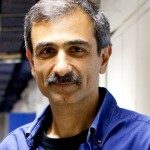Lien vers Pubmed [PMID] – 21505895
Biomech Model Mechanobiol 2012 Jan;11(1-2):207-19
In genetically modified mice with abnormal skeletal muscle development, bones and joints are differentially affected by the lack of skeletal muscle. We hypothesise that unequal levels of biophysical stimuli in the developing humerus and femur can explain the differential effects on these rudiments when muscle is absent. We find that the expression patterns of four mechanosensitive genes important for endochondral ossification are differentially affected in muscleless limb mutants, with more extreme changes in the expression in the humerus than in the femur. Using finite element analysis, we show that the biophysical stimuli induced by muscle forces are similar in the humerus and femur, implying that the removal of muscle contractile forces should, in theory, affect the rudiments equally. However, simulations in which a displacement was applied to the end of the limb, such as could be caused in muscleless mice by movements of the mother or normal littermates, predicted higher biophysical stimuli in the femur than in the humerus. Stimuli induced by limb movement were much higher than those induced by the direct application of muscle forces, and we propose that movements of limbs caused by muscle contractions, rather than the direct application of muscle forces, provide the main mechanical stimuli for normal skeletal development. In muscleless mice, passive movement induces unequal biophysical stimuli in the humerus and femur, providing an explanation for the differential effects seen in these mice. The significance of these results is that forces originating external to the embryo may contribute to the initiation and progression of skeletal development when muscle development is abnormal.

